


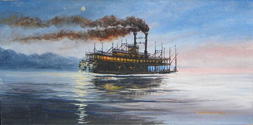
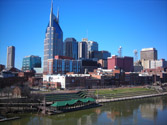
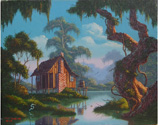
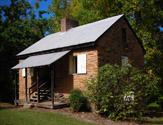









Cotton States Archive
Andrew Johnson Hotel
Knoxville Landmark Where Hank Williams Would Have Spent Final Night
Knoxville Landmark Where Hank Williams Would Have Spent Final Night
Constructed in 1928, Knoxville's 17-floor, 205' tall Andrew Johnson Hotel reigned as the city's tallest building until 1979. The hotel, designed by the Knoxville firm of Baumann & Baumann was added to the National Register of Historic Places in 1980, and today it is utilized as an office building. Named in honor of U. S. president Andrew Johnson, the landmark, located at 912 South Gay Street, was among Knoxville's premier hotels for a number of years, serving as a popular lodging destination for tourists visiting the Great Smoky Mountains just south of the city.
One of the hotel's most distinguished guests was country music legend Hank Williams, but, in actuality, Williams spent just a few hours of his last night there. Atlanta Journal-Constitution writer Jim Tharpe interviewed the singer-songwriter's chauffeur, Charles Carr, fifty years after that fateful night. The resulting article, published on December 30, 2002, recounted in detail the events that transpired just prior to Williams' death.
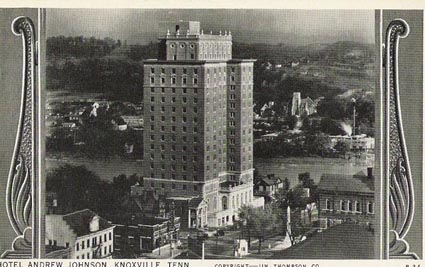
The year was 1952. Carr, a seventeen-year-old college boy from Alabama, had been hired to drive an ailing Hank Williams, 29, to concerts in Charleston, West Virginia, and Canton, Ohio. Having departed from Montgomery in Williams' baby blue Cadillac on December 30, the pair spent the first night of their trek in Birmingham. The following day, they left for Charleston, but began encountering wintry weather conditions by the time they reached Chattanooga. Upon arriving in Knoxville, the two decided to catch a plane to Charleston, but bad weather forced the flight to return. With the New Year's Eve show in Charleston now out of the question, they secured a room at Knoxville's Andrew Johnson Hotel, and hoped to make it to Canton by the following evening. Carr indicated that Williams was ill and very weak, and would hardly eat. A physician was called in, and the singer was given two injections. Some time over in the evening, they received a telephone call from the promoter of the Canton concert who reminded them of a clause in the contract that would penalize Williams if he didn't make the show. So, Carr and Williams left Knoxville before midnight, and it was somewhere between Bristol, Virginia, and Oak Hill, West Virginia, just hours later, that Hank Williams died of heart failure in the back seat.
In the film, The Last Ride (2011), a combination of facts and fiction portray Hank Williams' last three days. Williams' chauffeur, played by Jesse James, is known as Silas (instead of Charlie Carr, his real-life counterpart), and upon arriving in Knoxville the pair check into the fictitious Belmont Hotel instead of the Andrew Johnson.
In the film, The Last Ride (2011), a combination of facts and fiction portray Hank Williams' last three days. Williams' chauffeur, played by Jesse James, is known as Silas (instead of Charlie Carr, his real-life counterpart), and upon arriving in Knoxville the pair check into the fictitious Belmont Hotel instead of the Andrew Johnson.
BIBLIOGRAPHY
Jim Tharpe, "Hank Williams' last ride: Driver recalls lonesome end," Atlanta Journal-Constitution, December 30, 2002.
"Andrew Johnson Building," Emporis. Retrieved May 2006: http://emporis.com
Jim Tharpe, "Hank Williams' last ride: Driver recalls lonesome end," Atlanta Journal-Constitution, December 30, 2002.
"Andrew Johnson Building," Emporis. Retrieved May 2006: http://emporis.com
Author: Greg Freeman. Published May 7, 2006. Revised September 12, 2011. Revised October 18, 2011.
Copyright
Southern Edition
All Rights Reserved
Southern Edition
All Rights Reserved
All materials contained on this site, including text and images, are protected by copyright laws and may not be reproduced without prior written permission from the publisher. Where applicable, use of some items contained on this site may require permission from other copyright owners.
Fair Use of text from SouthernEdition.com does is permitted to the extent allowed by copyright law. Proper citation is requested. Please use this guide when citing a Southern Edition article.
Contact Greg Freeman or SouthernEdition.comFair Use of text from SouthernEdition.com does is permitted to the extent allowed by copyright law. Proper citation is requested. Please use this guide when citing a Southern Edition article.